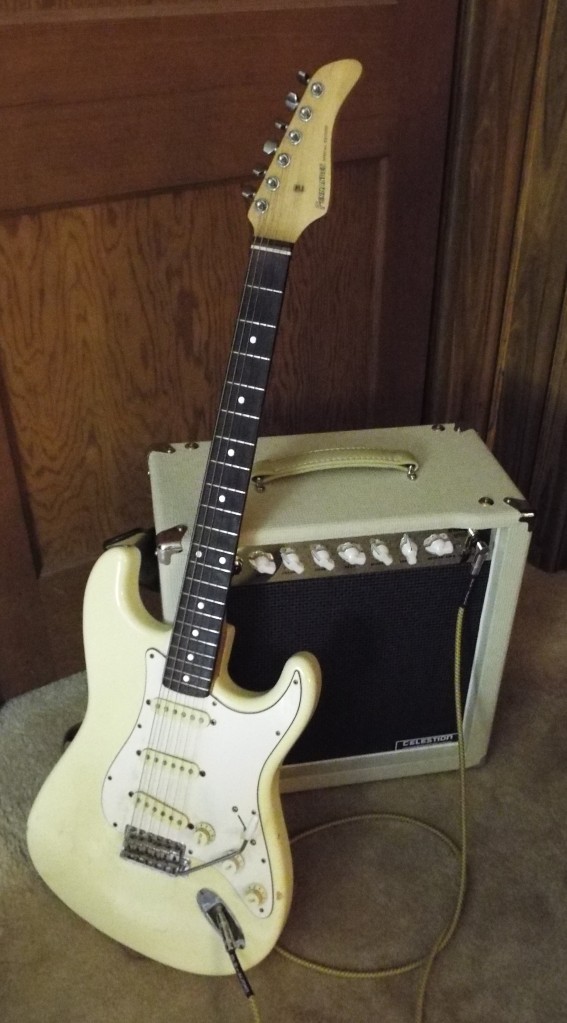I was and remain a blues cat. The guy at the store saw me coming and recommended a plastic case full of Boss pedals, It made a little sorta sense, cuz I had a good guitar, but a pretty bad Peavey amp. (or maybe not bad, but wrong for the sound I wanted) The only one of those pedals that stuck was an orange DS1. I couldn’t get a sound I liked out of the yellow OD1, and the CS2 compressor completely wrecked my dynamics and put this weird ‘pop’ on the front of all my notes, but it got worse; I asked if they could modify my axe with a coil-splitting switch, and they told me I didn’t want that, what I WANTED was a phase switch (for the y’know, Peter Green thing, which not for nothing was ALSO wrong; Peter’s neck humbucker WAS inadvertently wired out-of-phase from the factory, but it had also been re-installed upside-down or backwards, if you prefer, after a later repair) Wrong, I really DID want the two humbuckers split in the middle position. But I was never really happy with my tone, ’til I got my ’69 Super Reverb and leveled up to a wine/gold all mahogany/ebony fretboard Les Paul Custom with the crank-handle, fold-out tuners. It was built like a brick boat, but it had some TONE!
I ended up trading it at a HUGE loss for a shitty Japanese three-bolt Stratocaster. It was beat, it was ugly; it was unsuccessfully refinished, even. It was stained all over with nicotine and it STANK. It had stickers on it from Gilley’s AND Billy Bob’s. But with the primitive 3-way blade in the precarious bridge-middle position, it had a voice like a horny angel. So I added a set of Texas Specials, some big-ass frets and a five-way switch and GLORY BE! I could SRV my rotten little heart out. Only I’d learned a hard lesson during that tone journey. See, I’d locked myself in a woodshed for about a year, with that first Aria Pro ZZII Explorer, the DS1, a Gorilla amp (the one with the hilarious “Tube Stack” switch) and a copy of “Johnny Winter And, Live!”. I played along with that damned thing nearly all day, every day and once I’d come out of yon woodshed, I got real damned tired of hearing, “Dang, you sound JUST LIKE Johnny Winter!”. Only it turned out, THAT job was taken, so I got a gig with a country band playing a lot of George Jones and Buck Owens. Them old cats made me sing all the Randy Travis. Thirty years later, I was in a way better country band. THEY made me sing all the Travis Tritt. I reckon if I have a point, it’s that tone is a trip.

